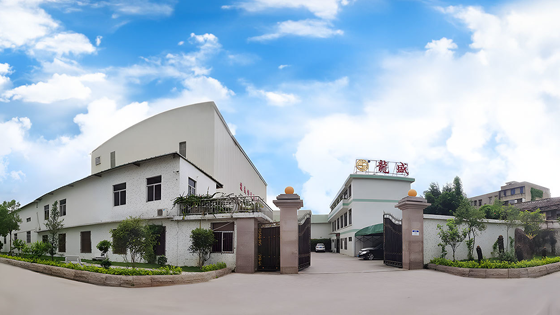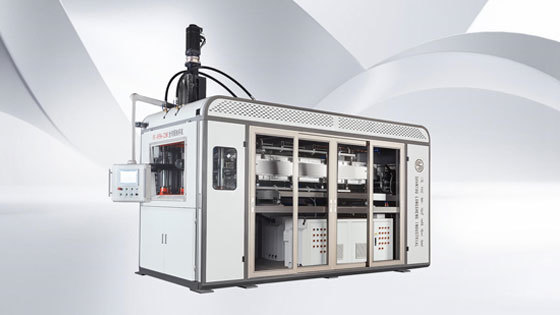How PE Extruder Machines Promote Environmental Sustainability in the Plastics Industry
Time: 2025-11-01 11:50:32.406
How PE Extruder Machines Promote Environmental Sustainability in the Plastics Industry Table of Contents 1. Introduction to PE Extruder Machines 2. Understanding the Extrusion Process 3. Environmental Benefits of PE Extruder Machines 3.1 Waste Reduction and Recycling 3.2 Energy Efficiency in Manufacturing 3.3 Transition to Biodegradable Alt
How PE Extruder Machines Promote Environmental Sustainability in the Plastics Industry
Table of Contents
- 1. Introduction to PE Extruder Machines
- 2. Understanding the Extrusion Process
- 3. Environmental Benefits of PE Extruder Machines
- 3.1 Waste Reduction and Recycling
- 3.2 Energy Efficiency in Manufacturing
- 3.3 Transition to Biodegradable Alternatives
- 4. Regulatory Compliance and Sustainability Goals
- 5. Technological Advancements in PE Extrusion
- 6. Case Studies of Sustainable Practices
- 7. The Future of PE Extruder Machines in Sustainable Development
- 8. Frequently Asked Questions
- 9. Conclusion
1. Introduction to PE Extruder Machines
In today’s industrial landscape, **polyethylene (PE) extruder machines** are at the forefront of plastic manufacturing. These machines not only enhance production efficiency but also play a critical role in promoting **environmental sustainability**. By transforming raw materials into finished products, PE extruders help reduce waste, optimize energy consumption, and shift towards more eco-friendly alternatives.
2. Understanding the Extrusion Process
The extrusion process involves melting plastic pellets and forcing them through a die to create various shapes, including films, sheets, and profiles. This continuous process is crucial for producing high volumes of plastic products with consistent quality. Understanding the mechanics of this process sheds light on how PE extruders can be optimized for sustainability.
2.1 Components of PE Extruder Machines
PE extruder machines consist of several key components:
- **Hopper**: Where raw plastic pellets are fed into the machine.
- **Barrel**: Houses the screw that melts and transports the material.
- **Screw**: Rotates to mix and push the melted plastic through the die.
- **Die**: Shapes the melted plastic into the desired form.
Each component plays a significant role in ensuring efficient operation and minimal waste.
3. Environmental Benefits of PE Extruder Machines
PE extruder machines are not just about production; they are instrumental in achieving **environmental sustainability** in several ways:
3.1 Waste Reduction and Recycling
One of the main advantages of using PE extruder machines is their ability to help reduce plastic waste. They can process **recycled materials** and transform them into new products. This recycling capability significantly lessens the demand for virgin plastic, thereby conserving natural resources.
Moreover, advanced technologies in extrusion allow manufacturers to reuse scrap materials generated during production. By integrating these practices, companies can achieve a **circular economy**, where waste is minimized, and resources are continuously cycled through the system.
3.2 Energy Efficiency in Manufacturing
Energy consumption is a major concern in the plastics industry. PE extruder machines are designed for **energy efficiency**, utilizing advanced heating and cooling systems to minimize energy use during the extrusion process. This not only reduces operational costs but also lessens the carbon footprint associated with plastic manufacturing.
Additionally, companies can implement energy recovery systems that capture excess heat produced during extrusion, repurposing it for other functions within the facility. Such innovations contribute to a more sustainable manufacturing environment.
3.3 Transition to Biodegradable Alternatives
As consumer demand for eco-friendly products grows, manufacturers are increasingly exploring **biodegradable alternatives** in plastic production. PE extruder machines can handle a variety of materials, including biodegradable plastics derived from renewable resources.
This flexibility allows companies to innovate and produce sustainable products that decompose more easily in the environment. By facilitating the transition to biodegradable plastics, PE extruder machines are driving significant changes in the industry.
4. Regulatory Compliance and Sustainability Goals
Governments worldwide are implementing stringent regulations to mitigate environmental impact, pushing companies to adopt sustainable practices. PE extruder machines help manufacturers comply with these regulations by:
- Enabling the use of recycled materials.
- Reducing energy consumption.
- Minimizing waste generation.
By aligning with sustainability goals, companies enhance their marketability and contribute positively to environmental conservation efforts.
5. Technological Advancements in PE Extrusion
The field of PE extrusion is rapidly evolving, with technological advancements enabling more sustainable practices:
- **Smart manufacturing**: Utilizing IoT (Internet of Things) technologies allows for real-time monitoring and optimization of the extrusion process.
- **Advanced automation**: Streamlining operations to reduce human error and energy wastage.
- **Material innovations**: Development of new, sustainable materials that can be processed using existing extrusion technology.
These advancements not only enhance production efficiency but also contribute to a more sustainable manufacturing process.
6. Case Studies of Sustainable Practices
Several companies worldwide have successfully integrated PE extruder machines into their sustainability strategies. For instance:
- **Company A** implemented a recycling program that utilizes PE extruders to create new products from post-consumer waste, reducing landfill contributions significantly.
- **Company B** invested in energy-efficient PE extruder machines, reducing their overall energy consumption by 30%, while still meeting production demands.
These case studies illustrate the tangible benefits of adopting PE extruder technology in fostering sustainability.
7. The Future of PE Extruder Machines in Sustainable Development
The future of PE extruder machines looks promising, with ongoing research and development focusing on enhancing their sustainability features. Innovations such as:
- **Enhanced recycling technologies** that enable the processing of complex plastics.
- **Bioplastics development** that could revolutionize the industry.
As these technologies advance, the role of PE extruder machines in environmental sustainability will only grow, positioning them as essential tools in achieving a more sustainable future for the plastics industry.
8. Frequently Asked Questions
What are PE extruder machines?
PE extruder machines are specialized equipment used to convert polyethylene pellets into various plastic products through a melting and shaping process.
How do PE extruder machines promote sustainability?
They promote sustainability by reducing waste through recycling, enhancing energy efficiency, and enabling the production of biodegradable alternatives.
Can PE extruder machines process recycled materials?
Yes, PE extruder machines can effectively process recycled materials, allowing manufacturers to reduce their reliance on virgin plastics.
What is the significance of energy efficiency in PE extrusion?
Energy efficiency is crucial as it reduces operational costs and lowers the carbon footprint of plastic manufacturing, aligning with sustainability goals.
Are there biodegradable alternatives for PE extrusion?
Yes, there are biodegradable materials that can be processed using PE extrusion technology, enabling the production of eco-friendly plastic products.
9. Conclusion
PE extruder machines are more than just tools for plastic production; they are vital components in the journey toward environmental sustainability. By embracing waste reduction, energy efficiency, and innovative material usage, these machines are leading the charge in transforming the plastics industry. As we continue to innovate and adapt, the potential for PE extruder machines to contribute to a more sustainable future is boundless. Through responsible manufacturing practices, we can ensure that plastic production aligns with the broader goals of environmental conservation and sustainability.
Related News
Exploring the Advantages of China Multi-Station Thermoforming Machines
In the realm of manufacturing and processing machinery, the China multi-station thermoforming machine stands out as a versatile tool designed for producing a wide array of plastic products. Thermoforming is a process where plastic sheets are heated until pliable and then formed into specific shapes using molds. This technique is particularly advantageous for high-volume production runs and intrica
Key Performance Indicators for PVC Thermoforming Machine Efficiency Introduction to PVC Thermoforming Machine Efficiency In the competitive landscape of the manufacturing industry, particularly in the realm of plastic processing, measuring and enhancing the efficiency of PVC thermoforming machines is paramount. As companies strive to maximize production while minimizing waste, understanding the **
Understanding the Role of PP Thermoforming Machine Companies in Plastic Manufacturing
In the ever-evolving landscape of the plastic processing industry, PP thermoforming machine companies play a pivotal role in advancing manufacturing processes. These specialized companies focus on the design, development, and production of thermoforming machines that utilize polypropylene (PP), a versatile and widely used thermoplastic polymer. Thermoforming, a process that involves heating a plas
Maximize Output with the Newest Pet Thermoforming Machine: A Comprehensive Guide
Maximize Output with the Newest Pet Thermoforming Machine: A Comprehensive Guide Introduction to Pet Thermoforming Machines The manufacturing landscape is continually evolving, and with it, the demand for more efficient production methods. Pet thermoforming machines have emerged as essential tools in plastic processing, offering innovative solutions for creating high-quality products. In this guid
Contact Us
China Shantou Longsheng Industry Co., Ltd.
Address:No.44 Xigang Road, Shantou, Guangdong, China
Mob: +86-13302710116
Shiela:+86-15362312727
E-mail: longshengmachine@gmail.com



TikTok





